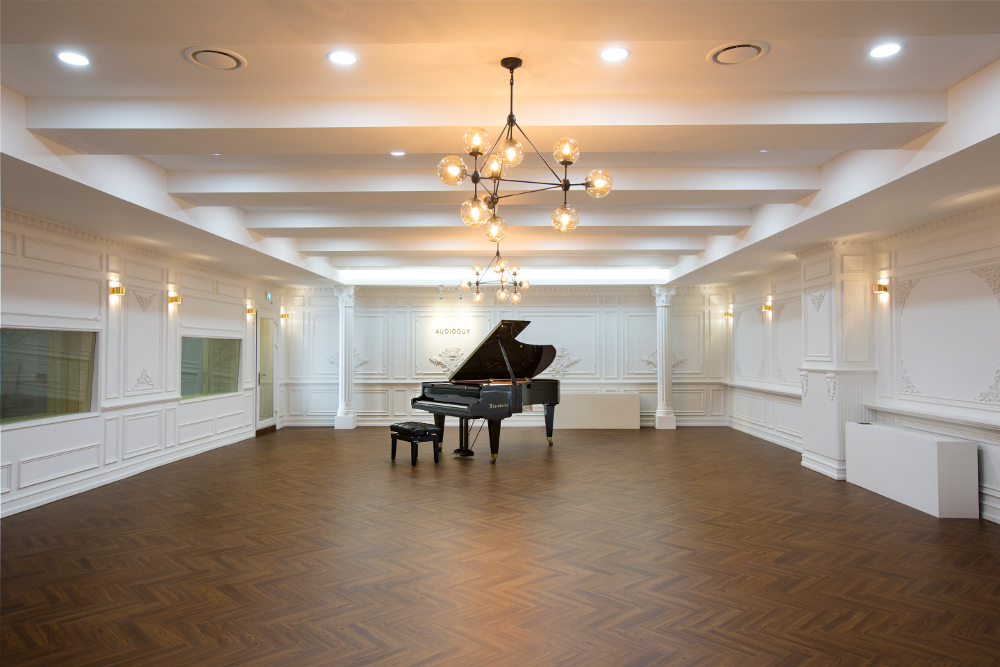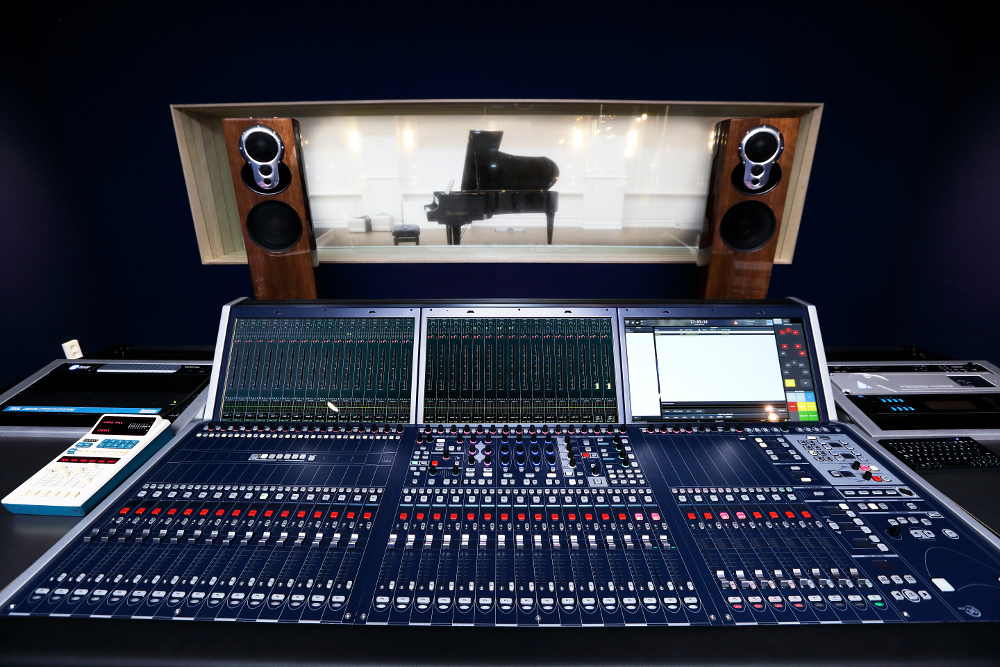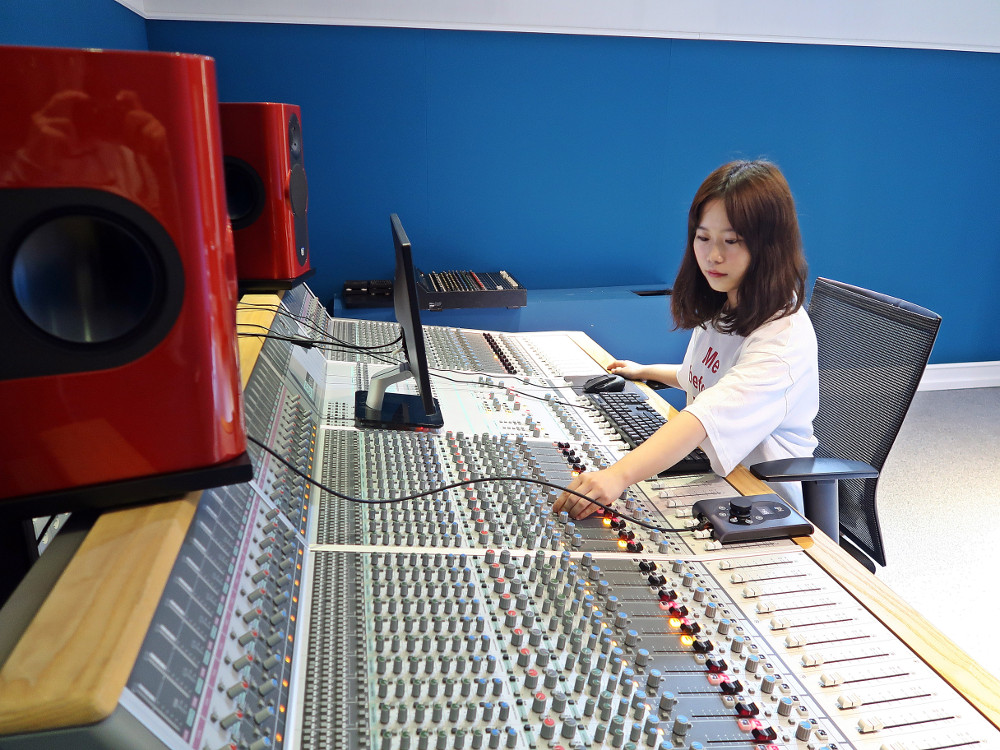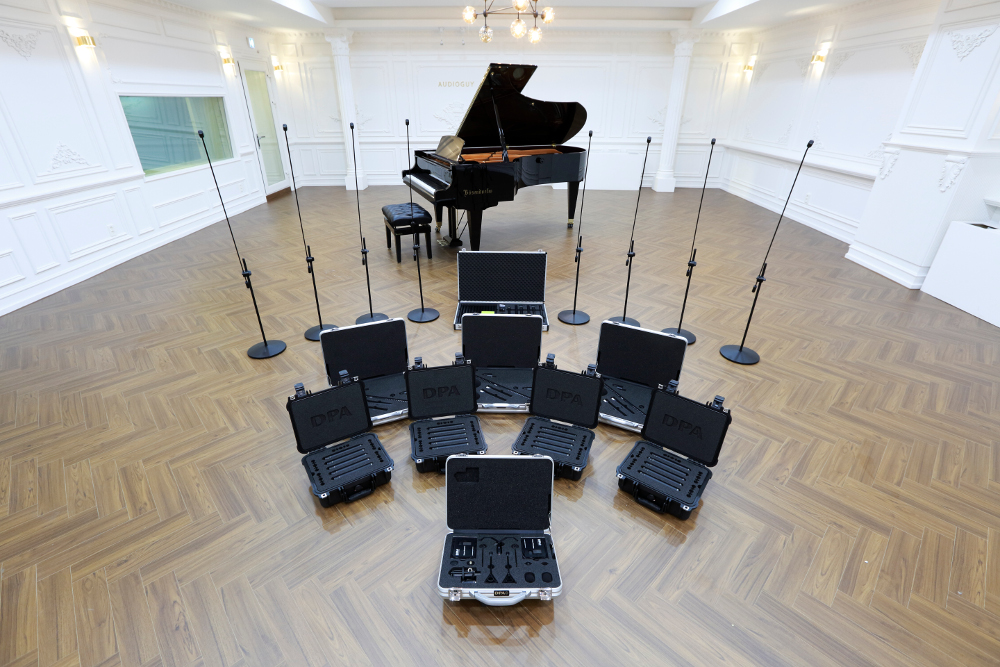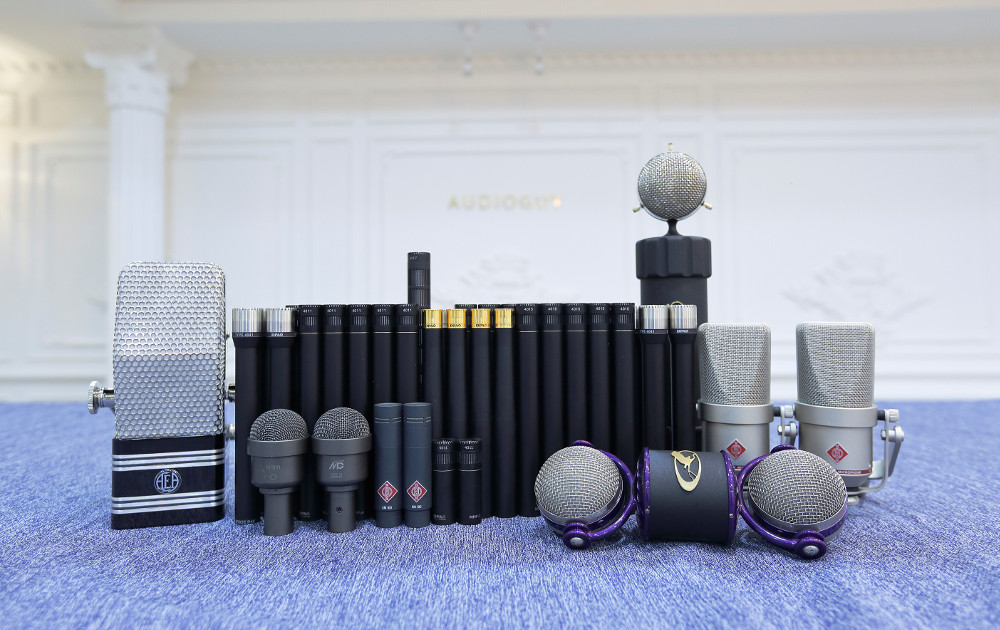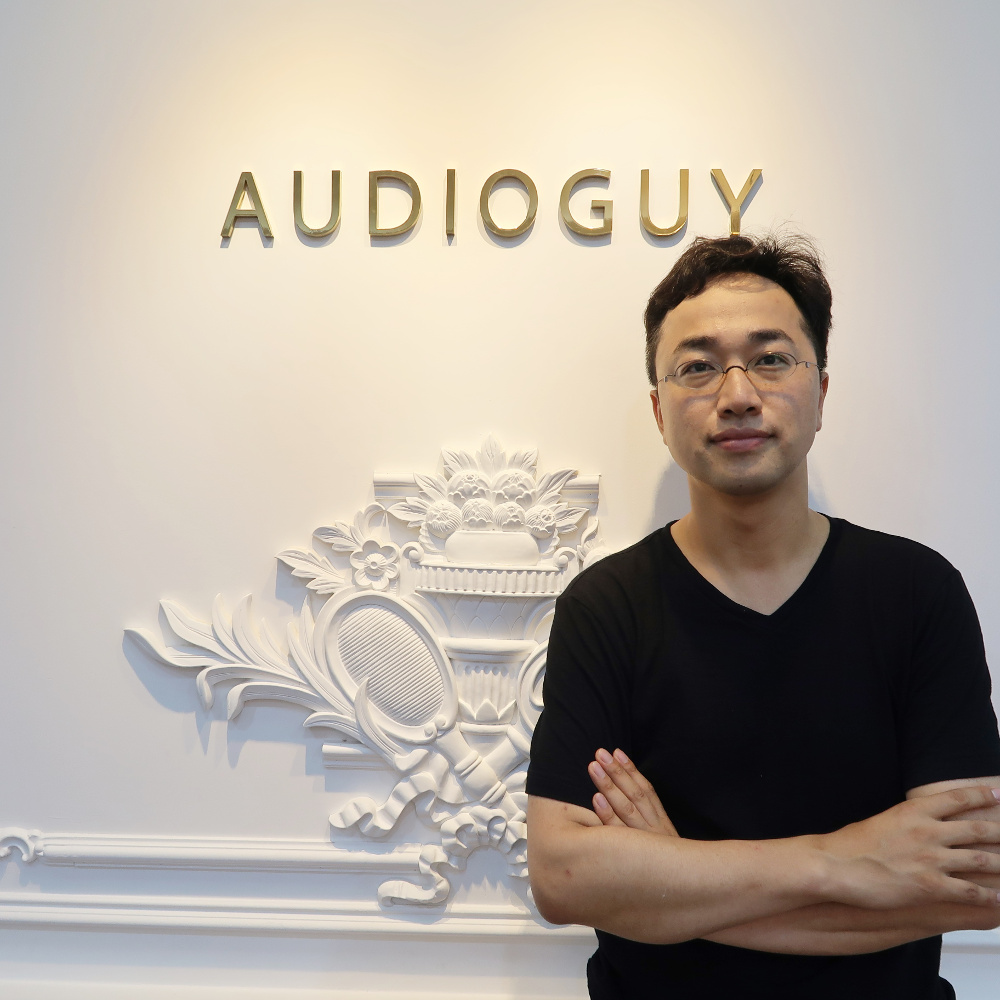Recording Studio Sweet Spot: Audioguy — Seoul, South Korea
The nature of music. Nothing less than this is what the studio known humbly as Audioguy is on a quest to discover.
Set within South Korea’s ancient capital city of Seoul, this is a facility where Eastern philosophy, old school recording techniques and advanced concepts converge. All about audio is questioned, then mindfully answered to best serve the artist.
The ideas that guide Audioguy founder Jung-Hoon Choi are poetically profound, forming the foundation of a studio and label that favors classical, jazz and the traditional Korean genre Gukak. They’re distilled in deep thoughtfulness about things that really, really matter when making a recording: the musician’s intent, the room they perform in, the microphones that capture it all, the monitors that inform them.
“Music is a fruit of all efforts, time and experience,” Choi observes. It’s a natural origin for the songs that this remarkable room, in the heart of Seoul, preserves and inspires.
Facility Name: Audioguy
Location: B1, 23, Hyoja-ro, Jongno-gu, Seoul, Republic of Korea
Neighborhood Advantages: Audioguy is located in center of Seoul city, right next to Gyeongbokgung which is the oldest of five royal palaces of Joseon period, nearby Cheongwadae, the Korean Blue House.
They are full of people and tourists who want to visit Gyeongbokgung, attractions such as Daelim Contemporary art museum and various exhibitions.
Here, people can sense vitality among daily life but at the same time, there is also a calm and peaceful atmosphere in every corner and alley. If we need to be refreshed, the only thing we have to do is simply walk out and spend some time on the street.
Facility Focus: Our primary focus would be on recording, as Audioguy is an acoustic label mainly specializing in classical, Jazz and Gukak (Korean Traditional Music genre).
As a matter of fact, we try to make roughly 90% as close as the mixed sound in the recording process, because we believe a good recorded sound makes good music.
We consider mixing as a step of supplementation. Also, we have to keep in mind who will mostly listen to this music, for example whether they are audiophiles or not. Even mixing/mastering for vinyl needs to be different.
Thus, Audioguy’s focus is on recording, however, I believe there’s no difference of importance in between recording and mixing/mastering.
Date of Birth: Audioguy was founded in 2000, and the current studio was constructed on 2015.
Mission Statement: As noted above, Audioguy is highly specialized in Classical, Jazz and Gukak but it’s hard to say the “type” of music that we are focusing on. We always have been and will dream about the beautiful music of an artist filling a whole space that has great acoustics.
Although the same artist plays the same music, different spaces give a different sound. And that sound is not just a “sound,” but it is a sentiment, music itself.
Now we can expand the domain of recording. Spaces, artists, equipment and skills, they individually bring out totally different outcomes in recording.
When an artist plays a very first note of certain music, when that vibration transfers into sound, when the artist feels that sound and then plays the next note, that’s the time when an engineer has to catch that feeling and record so that people can also feel as it is.
It’s true that sometimes we have to put an effort in so that music can be heard even better. However, focusing on the nature of music is what we think is really important, and we believe this is the way that recorded music can be played for long periods.
Thus, I would say we are focusing on music itself.
Audioguy opens an Ulrim project (“Ulrim” means “reverberation” in English) every year to which all artists can apply. We select a few and give them a chance to make their own album with Audioguy, and support all the costs for album publishing.
However, and not just from this kind of project, we hope artists will catch and learn something throughout what I’ve mentioned above. As well, from the final music which is a fruit of all efforts, time and experience.
Clients/Credits: Visit our Album page for a discography.
For Example:


Key Personnel: Recently, working with only a few in the recording studio seems like a worldwide trend. In fact, recording studios do not need as many staffers as compared to the old days. However, we are doing the opposite as I believe one’s clear concept of sound is important, but taking various opinions from a team can bring even better outcomes.
I mainly take responsibility for microphone setup technique and Seung-Hyun Koh is focusing on recording and editing. One of the most important members, Soung-Byum Park, listens to recorded sound and does mixing. Lastly, Yun-ji Park plays the role of A&R, since Audioguy is not just a recording studio but also a label company.
Within all these processes, we are absolutely free to share our opinions for better sound. Someone who can make a good sound should be able to listen to that good sound and also be able to share his or her thoughts about it. All of our communications are essential to deciding the final sound direction.
Console Role: One reason that I use consoles is because I do not prefer DAW internal mixing. Only a few tracks would be fine for that, but as there are more tracks, there are more considerations that I have to take care of.
Clearly there are sound differences between DAW internal mixing and console mixing. For example, using the summing bus of the LAWO console sounds more natural whereas DAW internal mixing gives me a “boxy sound.” Overall, high-quality 3D panning system, remarkable mic-preamplifiers and compressors are all reasons why I’m using the LAWO MC36 console.
The other console that we have is an Audient 8024 Analog console, which we are currently using for mixing and mastering. Nowadays, we are focusing a lot on vinyl production. Many people assume that recording should be in analog for vinyl. We found out that we can get outstanding results when we use analog equipment during mixing and mastering throughout our experiences. Accurate and wide stereo image is certainly one of the advantages of digital consoles. However, this could make it hard to cut vinyl. Adding to that, we should avoid strong transient characteristics as it could be a problem.
Of course, making better vinyl is not just about using digital or analog console. A lot of things should be considered, such as limitation of high/low frequencies or stereo images of low frequencies, and more.
Live Room: As you can see, Audioguy is not designed to be a common recording studio.
I’ve been recording in many different places and countries, from a huge European Catholic church to Japanese small or big concert halls, including very old Korean buildings.
I’m captivated by a sound, recorded with the enriched reverberation of a beautiful hall, which gives birth to music. That moment is what I want to let people hear.
This is why I designed the live room.
There is none of the material that could absorb sound in the live room. It blocks external vibration completely and sound in the live room stays long when it is reflected by WainScoting decorations. As a result, the live room has roughly 2.5 seconds reverberation time.
In fact, most artists need some time to get used to our hall because of long reverberation. Besides, microphone technique is very difficult, as just an inch apart would result in significant differences in proportion of direct sound and indirect sound. However, we can always get fantastic sound overall.
Mic Collection: Microphones are what I love the most among all audio equipment, even their designs look fantastic to me.
I use DPA, Neumann and Schoeps microphones mostly. They all have different characteristics, for example the off-axis coloration sounds totally different between DPA and Schoeps even if they are both set to Omni.
In the past, I only looked for “the best microphone.” But just as you must understand the characteristics of a room and monitoring speakers, I realized that understanding characteristics of each microphone is more important than buying expensive microphones.
The best distance between a microphone and an instrument varies according to different microphones I use, even if same instrument is being played in same space. What this means is, understanding microphone is an essence of the best recording.
I don’t believe one microphone is always good for all recordings. For instance, a large diaphragm tube microphone would be preferred when I record simple vocal dubbing. However, I would prefer a small diaphragm stereo microphone for recording with a full orchestra and vocals at the same time. The stereo image and sound of orchestra would be way better if a vocal microphone can pick it up in stereo. Thus, I choose microphones due to spaces and music genre.
Throughout a lot of recording sessions, I especially give thanks to MBHO PZM microphones. Additionally, Neumann KU100 Dummy-Head microphones, Neumann USM69i stereo microphones, AKG C426 and C33E stereo microphone are coming up in my mind. All of the microphones that I have are special to me and I’m planning to upgrade one-by-one. I guess my next choice would be Sennheiser microphones.
Additional System Highlights: From recording to playback music, every single piece of audio equipment is vital.
Recently, I’ve started using Genelec’s coaxial speakers and they sound amazing. What I mean by “amazing” is that speakers can deliver natural (or original) sound as it is with flat frequency balance. I don’t set the monitoring level high, so sound linearity at low volume is very important to me. Genelec’s coaxial speakers have a very small difference whether monitoring level is high or low, and I don’t get easily tired even when the volume is loud. By the way, I’m planning to install Genelec 11.1 monitoring system within this year and have high expectations.
I prefer preamplifiers which are installed within converters, such as Merging Horus, RME Micstasy, DAD AX32 etc. Compared to the old days, these built-in preamplifiers have become better and better. Another advantage of them is we can save time for recording. However, I bought two GML 8304 preamplifiers lately. Built in preamplifiers certainly have advantages but also well-made preamplifiers like the GML 8304 give us inspiration through such a fantastic sound. One of the most significant characteristics of the GML 8304 is I can get a wider stereo image of piano in a really good sound. As you can see, I’m not a guy who is just into one thing. I like to try everything and choose only by ears.
In additions, I love the sound from Kii Audio’s Model 3 speakers and have always been surprised by the basic plugins of Magix Sequoia.
Rave Reviews: Recording good sound should be the first priority, but it is also important to let artists feel comfortable. More than that, knowing what they think and understanding their music is very important. We should be fully aware of their thoughts and goals that they want to achieve through recording before we press the “record” button.
The first monitoring sound in the control room after the very first take should sound almost like the mixed one. Then artists can solely concentrate on their music.
When people find out these directions and when their music sounds better through these, they start to like Audioguy.
I guess if people say one thing about Audioguy, that would be we are people who can understand their music.
Most Memorable Session Ever: My most memorable session is the first recording after I built this studio.
I prefer very quick microphone setup, because I won’t need much time if I clearly understand the desirable sound and the image of a space.
The first recording session in this studio was a trio recording with violin, cello and piano, and they all sounded surprisingly weird due to long tail of reverberation. That was a shock because what I knew about distance from sound source did not apply to it at all, completely out of my experiences at that time.
On average, I never spend over 30 minutes for trio setting, but on that day I spent over 2.5 hours just for microphone setup, in a hall that I designed myself. Literally, I did everything that I could do, like get rid of the whole piano’s cover.
That made me to think more of a microphones’ polar pattern. That made me prefer more of a MS set-up, and I started using hyper-cardioid microphones and even shotgun microphones which I had never used before.
That’s why that recording session is my most memorable session, because it was kind of a turning point of my recording life.
Dream Session: If it is possible, I would like to experience the very first period of recording, when the one-point mono microphone was used because music itself might be enough in mono.
— Jung-Hoon Choi, Founder, Audioguy
Please note: When you buy products through links on this page, we may earn an affiliate commission.







